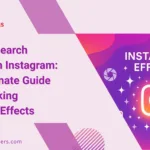Authorized Buyers is Google’s updated framework for controlling who can bid on publisher inventory. This shift replaces the older Ad networks blocking with a centralized, transparent control in AdSense and Ad Manager. The rollout begins in November and is designed to give publishers clearer visibility into who can bid and how those bidders relate in a parent–child hierarchy. This evolution marks a significant step in how programmatic demand is governed across Google Partner Inventory.
The goal of Authorized Buyers is to modernize brand safety tools to reflect the current programmatic landscape. By focusing on Authorized Buyers rather than traditional ad networks, Google makes it easier for publishers to manage demand from DSPs and trading desks that programmatically access Google Partner Inventory. This is a meaningful shift for anyone overseeing monetization across sites, apps, or connected properties, and it signals a broader industry move toward centralized governance of bidder access.
What Authorized Buyers Means for Publishers
With Authorized Buyers in place, publishers can distinguish between allowed bidders and blocked buyers with greater precision. The new framework extends beyond the legacy concept of ad networks to include DSPs and trading desks that operate across multiple networks but now funnel their access through a single, auditable interface. Publishers gain a clearer line of sight into who is bidding on each impression and under what terms, reducing ambiguity and opening a path to more consistent monetization.
Transparency is the key benefit. The Authorized Buyers system exposes parent–child relationships among buyers, helping publishers identify entities that share ownership or bidding strategies. This makes it easier to align demand with brand safety policies and to enforce control across campaigns and inventory types. As a result, publishers can implement more granular safeguards and consistent policy enforcement across all demand sources.
Key Features of the Authorized Buyers Page
The new page consolidates governance of bidders into one place and introduces several practical features that directly impact day to day operations. Key capabilities include:
- Clear controls to Allow or Block individual buyers on specific inventory
- Visibility into parent–child relationships among buyers and how they compete
- Automatic removal of inactive or test networks from the primary list to reduce clutter
- Manual override on new authorized buyers, since automatic allowances are no longer applied
- Automatic carryover of existing ad network blocks to preserve prior protections
These features help publishers maintain a secure, clean demand path while reducing the risk of unsuitable partners slipping through. The interface is designed to be intuitive and fast, so it is reasonable to expect a shorter time to configure critical protections for new tests and pilots. In practice, this means you can adjust access quickly in response to performance signals and policy changes.
Transitioning from Ad Networks to Authorized Buyers
Google has designed the transition to minimize disruption. Before the change on the initial rollout date, publishers can preview the new Authorized Buyers page in view-only mode to understand how the controls map to their current setup. After the rollout, the Authorized Buyers page becomes fully functional and becomes the single source of truth for who can bid on inventory. Your existing ad network blocks are carried over automatically, so there is no need to re-create protection policies.
One notable shift is that the automatic allowance for new Google certified ad networks is removed. All new authorized buyers must be explicitly approved by the publisher. This reduces the chance of unknown bidders automatically gaining access, reinforcing brand safety and alignment with policy standards. The new approach also encourages a more deliberate review process, which can lead to higher quality demand over time.
How to Use the Authorized Buyers Page
Getting started with the Authorized Buyers page is straightforward and designed for ongoing governance. The goal is to balance reach with quality and safety. Here is a practical workflow to get you up to speed quickly:
- Review the current list of buyers to identify essential partners and blockers
- Examine parent–child relationships to spot ownership or bidding structure issues
- Block or allow specific buyers based on policy, performance, and brand safety signals
- Test changes during a controlled period and monitor impact on fill rate and eCPM
- Document decisions and set a cadence for periodic reviews of new buyers as they appear
In addition to this workflow, consider creating a standing policy that outlines how you evaluate new authorized buyers, how often you re-check relationships, and who has final approval authority. This ensures consistent governance as the marketplace evolves and as more DSPs and trading desks engage with Google Partner Inventory.
Impact on Reach, Pricing, and Transparency
The shift to an Authorized Buyers model can affect reach and competition in subtle but meaningful ways. With greater transparency, publishers may see more predictable demand from compliant DSPs and trading desks, while some previously aggressive bidders could encounter tighter access controls. Expect some readjustment in auction dynamics as the universe of allowed buyers becomes more clearly defined. This clarity can reduce the incidence of disjointed demand, leading to more stable auction results in the long run.
Pricing outcomes depend on how the bidding ecosystem responds to the new controls. In some markets, clearer visibility into bidder quality and policy alignment can stabilize yields by curbing low quality demand. In others, allowing higher quality buyers more predictable access could push prices higher for premium inventory. The key is to monitor cross inventory types and adjust blocking thresholds as needed to protect revenue and brand safety. By actively managing the Authorized Buyers list, publishers can optimize for both yield and long term brand integrity.
Timeline and Preparation for Publishers
Publishers should align teams with the new workflow for Authorized Buyers. As noted, the rollout starts with a preview mode and progresses to full functionality, with existing blocks carried over automatically. This means you can plan governance changes in phases without interrupting ad serving. It also means your team should prepare incident playbooks to handle any unusual bidding activity during the transition. A phased approach helps teams test policy changes without risking inventory disruption or revenue volatility.
As you plan, remember that the Authorized Buyers list is dynamic. New buyers may appear and require evaluation. Because automatic allowances are removed, proactive monitoring is essential to maintain brand safety while preserving monetization opportunities. Establish clear ownership and escalation paths for approving new buyers, and set up recurring reviews to ensure your policies adapt to market changes and new entrants to the ecosystem.
Best Practices for Maintaining Brand Safety with Authorized Buyers
Brand safety remains a top priority in the Authorized Buyers era. A best practice is to implement a tiered approach to access that aligns with risk appetite: always block unknown bidders, carefully review new entrants, and rely on a trusted set of buyers for premium inventory. Combine the new page with existing Google brand safety tools to build a multi-layer defense against unsafe demand. In addition, use contextual signals and category restrictions where available to reduce the likelihood of misaligned campaigns running on your content.
Practical steps include setting up automated alerts for unusual bidding patterns, running periodic audits of bidder identities and ownership structures, and maintaining a clear, written policy for what constitutes acceptable demand. Regularly revalidate your parent–child mappings to catch corporate changes that could impact access. Finally, share access review responsibilities across team members to avoid single points of failure. By integrating these practices, Authorized Buyers becomes part of a robust, repeatable process rather than a one off configuration change.
Frequently Asked Questions
What is Authorized Buyers and why is it replacing Ad networks
Authorized Buyers is Google’s centralized system for managing who can bid on inventory. It replaces older Ad networks blocking by offering more granular control, visibility, and governance of demand from DSPs and trading desks that access Google Partner Inventory.
Will new authorized buyers be allowed automatically
No. Unlike the old approach, new authorized buyers are not automatically granted access. Publishers must explicitly approve new buyers to ensure alignment with brand safety policies.
What happens to existing blocks when the transition occurs
Existing ad network blocks carry over automatically and remain in effect. The transition is designed to be seamless, with no action required to preserve protections.
How can I maintain brand safety during the transition
Review bidder lists regularly, monitor parent–child relationships, and block any buyers that do not meet your standards. Use the Authorized Buyers page in combination with other brand safety tools to maintain a strong defense against risky demand.
Conclusion
The move to Authorized Buyers represents a meaningful advance in how publishers control demand for their inventory. It delivers a cleaner interface, clearer governance, and a more current view of who has access to stock in the programmatic ecosystem. While the removal of automatic new buyer approvals increases the need for vigilance, it also empowers publishers to uphold stronger brand safety and policy compliance. By applying diligent review, ongoing monitoring, and a defined approval process, publishers can maximize yield while protecting their brand under the new Authorized Buyers framework.








